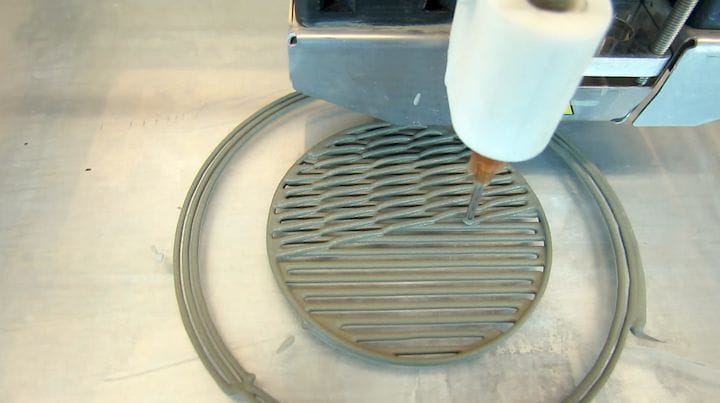![New ways to strengthen all types of 3D prints? [Source: Purdue]](https://fabbaloo.com/wp-content/uploads/2020/05/image-asset_img_5eb09f4e48254.jpg)
Researchers have developed a way to 3D print strong cement structures, but why couldn’t this be used in all 3D prints?
The researchers from Purdue noted that concrete 3D prints were often less strong than they could be. This is clearly due to the material properties of cement, as it really isn’t the greatest material strength-wise. It can crumble, but is frequently used as a building material due to its availability, cost and practical applications.
But when 3D printing objects, a very common approach is to use a sparse 3D model. That is to say, not solid. This is often seen with lattice structures for metal parts, for example. This enables a sometimes large reduction in the amount of expensive material used, with accompanying cost savings.
The Purdue researchers were inspired by nature to develop a solution. They observed the functions of certain biological structures, such as an appendage used by Mantis Shrimp to strike prey. This appendage apparently gets stronger when under impact pressures due to its internal design. Cracks, if developed, would enable mechanical stresses to be distributed across the object.
This inspiration led the researchers to design a series of 3D printable designs, which they hoped would enable stronger cement prints. Purdue explains the effect:
“Each of these architectures allowed for new behaviors in a 3D-printed element once hardened. The Bouligand architecture, for example, takes advantage of weak interfaces to make a material more crack-resistant, whereas the compliant architecture makes cement-based elements act like a spring, even though they are made of brittle material.”
It’s fascinating to see a material become stronger even if it is damaged. They describe this as “self healing”, but it is really a mechanical effect.
As I read through this material it seems that while they are using bioinspired designs, they’re really adjusting the infill pattern for 3D prints in order to create a kind of meta-material.
My question is this: if such techniques are suitable for 3D printed cement structures, why could the same techniques not be used on other types of 3D printing?
I can well imagine this approach being used on both metal and thermoplastic 3D prints, as there is considerable interest in techniques used to make 3D prints stronger. I think these techniques might be able to help produce more resilient mechanical parts using alternative materials.
It seems quite reasonable to me that if this technique is perfected, it could be integrated into 3D CAD systems to enable designers to automatically generate such self-healing structures from a base model, much in the same way that some CAD systems now offer 3D model optimization through simulation.
It may also be a possibility to integrate this approach into 3D print slicing systems. I can imagine a new kind of internal infill pattern could take advantage of this effect: an infill pattern that might get stronger if cracked. That would be most interesting.
But we’ll have to see how this newly discovered technology evolves and works its way into commercialization.
Via Purdue











A research thesis details the incredibly complex world of volumetric 3D printing. We review the highlights.